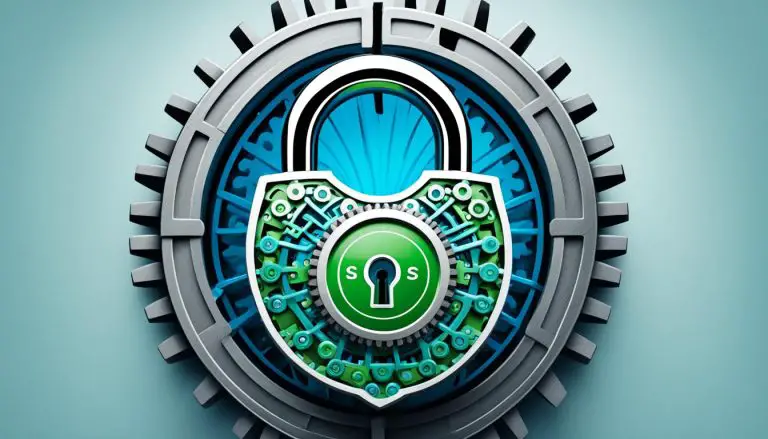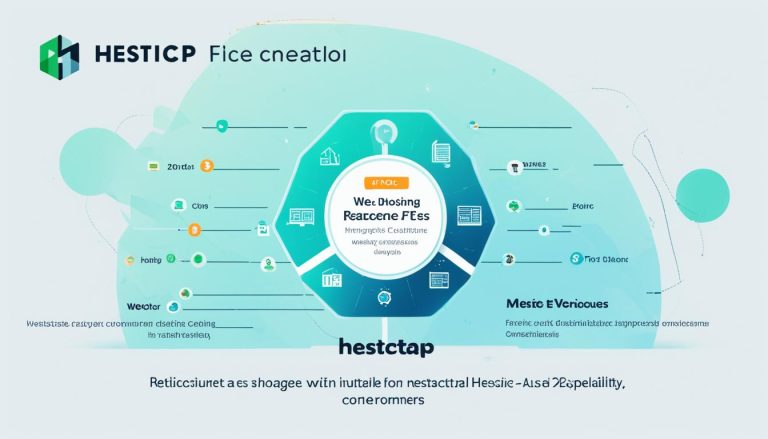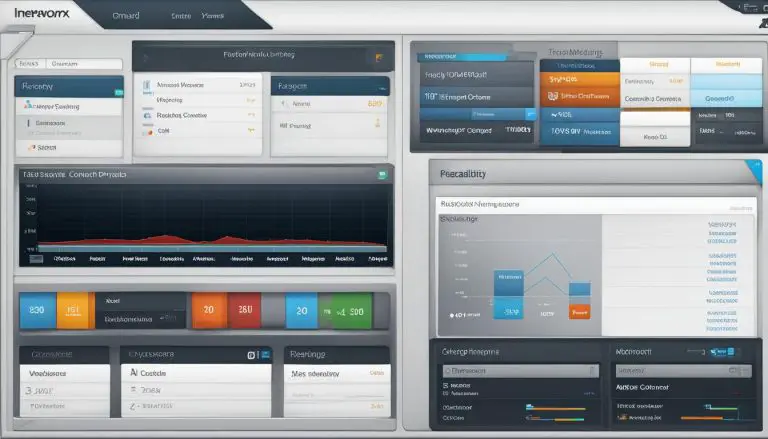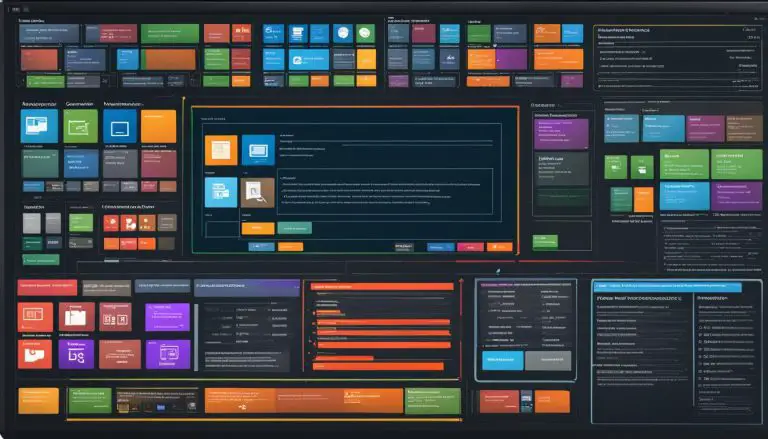Understanding What is HTTP/2: A Quick Guide
The Hyper Text Transfer Protocol (HTTP) is the foundation of the World Wide Web, enabling the retrieval of network resources. HTTP/2 is the second major version of this protocol, developed by the Internet Engineering Task Force (IETF) HTTP Working Group in 2015.
HTTP/2 improves web speed and performance, with features such as multiplexing, compression, request prioritization, and server push. It is designed to be compatible with HTTP/1.1 and offers advantages in terms of latency reduction, faster web performance, improved search engine rankings, and reduced operational and capital expenses.
Key Takeaways:
- HTTP/2 is the second major version of the Hyper Text Transfer Protocol (HTTP).
- It offers improved web speed and performance with features like multiplexing, compression, request prioritization, and server push.
- HTTP/2 is compatible with HTTP/1.1 and provides advantages such as faster web performance, reduced latency, and improved search engine rankings.
- Implementing HTTP/2 can lead to reduced operational and capital expenses for businesses.
- HTTP/2 is a significant advancement in the World Wide Web protocol that enhances the browsing experience for users.
The Evolution of HTTP
The development of the Hyper Text Transfer Protocol (HTTP) has followed a fascinating evolution over the years, with each version bringing advancements to the online experience. Let’s delve into the timeline of HTTP and explore how it has evolved from its inception to the introduction of HTTP/2.
HTTP0.9: The First Step
The concept of HTTP was proposed by Tim Berners-Lee, the pioneer behind the World Wide Web, in 1989. The first documented version, known as HTTP0.9, was released in 1991. It was a simple protocol that allowed users to request and retrieve HTML documents from servers. However, it lacked support for headers, making it suitable for only basic text retrieval.
HTTP1.0: Enhancing Functionality
In 1996, HTTP1.0 was introduced, addressing the limitations of its predecessor. This version brought in significant improvements, such as support for MIME types, allowing for the transmission of various file formats. Additionally, HTTP1.0 introduced headers, enabling better communication between clients and servers. However, it still suffered from certain performance-related issues.
HTTP1.1: A More Efficient Standard
HTTP1.1, released in 1997, aimed to overcome the limitations of its predecessors while improving web performance. This version introduced features like persistent connections and content negotiation, enabling faster page loading by reusing connections and optimizing resource delivery. HTTP1.1 became the widely adopted standard for many years and remains in widespread use today.
HTTP/2: The Future of Web Protocol
In 2015, HTTP/2 marked a significant milestone in the evolution of HTTP. It was developed as the second major version of the protocol by the Internet Engineering Task Force (IETF) HTTP Working Group. HTTP/2 built upon Google’s SPDY protocol, incorporating its advancements into a standardized protocol. This version addressed performance-related issues, focusing on enhancing web speed, efficiency, and user experience.
HTTP/2 vs SPDY: The Next Level
HTTP/2 brought significant improvements over its predecessors, such as multiplexing, compression, request prioritization, and server push. These features revolutionized the way websites are delivered and experienced by users. Concurrently, it is vital to note the relationship between HTTP/2 and SPDY. Google’s SPDY protocol laid the foundation for HTTP/2, serving as an experimental protocol to test new ideas and concepts. HTTP/2 expanded upon SPDY’s successes and further refined its features, making it more efficient and widely adopted by web platforms.
In summary, the evolution of HTTP from its humble beginnings to the introduction of HTTP/2 showcases the continuous efforts to improve web performance and enhance the browsing experience. HTTP/2, building upon the foundation established by HTTP1.1 and SPDY, offers significant advancements that address performance-related challenges and shape the future of web protocols.
Understanding Protocols and HTTP/2
In the world of web communication, a protocol serves as a set of rules that govern the way data is exchanged between clients and servers.
When it comes to HTTP/2, protocols play a crucial role in facilitating this effective communication. They consist of three main components:
- Header: The header contains essential information about the source and destination addresses involved in the data transmission process.
- Payload: The payload carries the actual data being transmitted between the client and the server.
- Footer: The footer acts as a control field, ensuring error-free transmission by verifying the accuracy and integrity of the data being exchanged.
HTTP/2 introduces a new binary framing layer, which enhances the communication process by enabling the efficient exchange of multiple concurrent streams over a single TCP connection. This means that multiple requests and responses can occur simultaneously, avoiding the need for multiple connections and improving overall performance.
By implementing this advanced protocol, HTTP/2 optimizes the communication between clients and servers, resulting in faster, more efficient web experiences.
HTTP/2 Features and Benefits
HTTP/2, the second major version of the Hyper Text Transfer Protocol, brings a host of innovative features and benefits that greatly enhance the performance of websites and improve user experiences. Let’s explore some of the key features and advantages of implementing HTTP/2.
Multiplexing: Parallel Processing of Requests and Responses
One of the standout features of HTTP/2 is multiplexing, which enables simultaneous processing of multiple requests and responses over a single connection. This means that instead of waiting for each request to complete before initiating the next one, the browser and server can exchange data in parallel, reducing latency and improving overall performance. With multiplexing, websites can deliver content faster, resulting in quicker load times and a smoother browsing experience. A single connection can handle numerous requests, eliminating the need for multiple connections and reducing overhead.
Compression: Reduced Protocol Overhead
HTTP/2 introduces header compression, where header fields are compressed before transmission and decompressed upon receipt. This results in reduced protocol overhead, as smaller amounts of data need to be sent back and forth between the client and server. By minimizing redundancy in header information, compression allows for more efficient data transfer, leading to faster page load times and reduced bandwidth consumption. This feature is particularly beneficial for mobile devices and networks, where bandwidth limitations are commonly encountered.
Request Prioritization: Efficient Resource Allocation
HTTP/2 enables the prioritization of requests, allowing developers to assign precedence to specific resources. By specifying the order in which resources should be fetched, websites can ensure that crucial assets, such as the main content and images, are prioritized over less critical components. This ensures that users quickly receive the elements that are most important for the initial rendering of the page, improving the overall perceived performance. Request prioritization also contributes to a more efficient allocation of server resources, optimizing the utilization of available processing power.
Server Push: Preemptively Sending Additional Content
Server push is a feature unique to HTTP/2 that allows servers to send additional content to the client’s cache even before it is requested. This preemptive pushing of resources helps to eliminate the need for subsequent round trips between the client and server, reducing latency and further improving page load times. By anticipating the user’s needs and proactively delivering relevant content, websites can provide a more seamless and engaging experience.
In summary, the features of HTTP/2, such as multiplexing, compression, request prioritization, and server push, offer undeniable benefits for web performance. Reduced latency, faster page load times, and improved search engine rankings are just some of the advantages associated with implementing HTTP/2. By leveraging these features, businesses can optimize their online presence, enhance user satisfaction, and stay ahead in the competitive digital landscape.
| Feature | HTTP/1.1 | HTTP/2 |
|---|---|---|
| Multiplexing | No | Yes |
| Compression | No | Yes |
| Request Prioritization | No | Yes |
| Server Push | No | Yes |
HTTP/2 Implementation and Compatibility
To implement HTTP/2, server software needs to be updated to support this new protocol. Fortunately, many web server implementations already have built-in support for HTTP/2. Additionally, ongoing updates to server software ensure compatibility and stability, making it easier for websites to transition to HTTP/2.
However, there is an essential requirement for fully leveraging the benefits of HTTP/2: websites need to be served over HTTPS. All major browsers have decided to implement HTTP/2 only for TLS (HTTPS) connections. This decision ensures that HTTP/2 is used in a secure and encrypted environment, enhancing user privacy and data protection.
While HTTP/2 enables secure connections under HTTPS, it does not automatically enable support for all encryption types available with HTTP/1.1. Additional encryption updates may be needed in the future to address evolving security standards and practices.
| HTTP/2 Implementation and Compatibility |
|---|
| Websites need to be served over HTTPS |
| HTTP/2 supports TLS (HTTPS) connections |
| Additional encryption updates may be necessary |

HTTP/1.1 Limitations and HTTP/2 Improvements
HTTP/1.1, the previous version of the HTTP protocol, had its limitations that affected web performance and resource prioritization. One of the key limitations was the restricted concurrent request processing per TCP connection, ultimately resulting in slower loading times and performance issues. This constraint often led to delays in serving web pages and hindered the overall browsing experience.
However, HTTP/2 comes as a significant upgrade addressing these limitations. It introduces a groundbreaking feature that allows multiple streams of data to be transmitted over a single TCP connection. This means that multiple requests and responses can be processed simultaneously, eliminating the need for multiple connections and significantly improving resource utilization.
With HTTP/2, websites can now handle more concurrent requests efficiently, resulting in faster and smoother performance. The improved resource prioritization mechanism ensures that critical resources are given priority, enhancing the overall user experience and optimizing page load times.
Moreover, HTTP/2 brings essential enhancements to security by implementing enhanced Transport Layer Security (TLS) features. This strengthens the encryption and integrity of data exchanged between the client and the server, offering better protection against potential security threats.
“HTTP/2’s ability to multiplex streams and prioritize requests provides a more efficient and secure browsing experience than its predecessor.”
Overall, HTTP/2 introduces significant improvements over HTTP/1.1, revolutionizing the way web content is delivered. Its enhanced concurrent request handling, optimized resource utilization, and improved security features make it the future of web protocol. With HTTP/2, users can expect a faster, more efficient, and secure browsing experience.
Illustrating the differences between HTTP/1.1 and HTTP/2, the following table showcases the improvements that HTTP/2 brings to the forefront:
| HTTP/1.1 Limitations | HTTP/2 Improvements |
|---|---|
| Limited concurrent request processing per TCP connection | Allows multiple streams of data over a single TCP connection, reducing the need for multiple connections |
| Slower performance and resource prioritization issues | Enhanced resource prioritization and optimized page load times |
| N/A | Implemented better TLS features for enhanced security |
Considerations for Transitioning to HTTP/2
The transition to HTTP/2 involves several important considerations to ensure a smooth migration. First and foremost, websites must have a secure connection (HTTPS) in place, as major browsers require HTTPS for HTTP/2 implementation. This step is crucial to take advantage of the enhanced performance and security features offered by HTTP/2.
When transitioning from HTTP/1.1 to HTTP/2, it is important to reevaluate certain optimization practices. Techniques like sprite files, inlining images using data URIs, and concatenating CSS and JavaScript files, which were commonly used in HTTP/1.1, may not be necessary or could even hinder performance under HTTP/2. These practices were designed to overcome the limitations of HTTP/1.1 but are no longer required due to the advanced functionality of HTTP/2.
Website owners must also pay attention to browser support for HTTP/2. While most modern browsers have adopted HTTP/2, it is crucial to verify if the target audience’s browsers support the protocol. This information will inform website owners on when and how to adapt their workflow to accommodate HTTP/2.
Embracing HTTP/2 entails examining current optimization practices, ensuring a secure connection, and staying informed about browser support. By considering these factors, websites can successfully transition to HTTP/2 and unlock the full performance potential of this protocol.
Conclusion
HTTP/2 is a significant advancement in the World Wide Web protocol, bringing a host of benefits and improvements to web performance. By building upon the success of SPDY and implementing innovative features, HTTP/2 enhances resource utilization, streamlines request prioritization, and minimizes protocol overhead.
As HTTP/2 continues to gain traction in the digital landscape, it is crucial for web designers and developers to embrace its impact on their workflow and optimize their websites accordingly. Understanding the fundamentals of HTTP/2 and leveraging its advantages can empower businesses to stay ahead and deliver exceptional browsing experiences to their users.
With faster web performance, reduced latency, and improved browsing experiences, HTTP/2 propels the internet into a new era of speed and efficiency. By implementing this protocol, businesses can unlock the full potential of their online presence, attracting more visitors, improving search engine rankings, and ultimately driving greater success in the digital realm.
FAQ
What is HTTP/2?
HTTP/2 is the second major version of the Hyper Text Transfer Protocol (HTTP), which is the foundation of the World Wide Web. It was developed by the Internet Engineering Task Force (IETF) HTTP Working Group in 2015 to improve web speed and performance.
How does HTTP/2 differ from HTTP/1.1?
HTTP/2 offers significant improvements over HTTP/1.1, including multiplexing, compression, request prioritization, and server push. These features reduce latency, enhance web performance, improve search engine rankings, and lower operational and capital expenses.
What are the benefits of using HTTP/2?
The benefits of using HTTP/2 include reduced latency, faster web performance, improved search engine rankings, and better resource utilization. It allows for parallel processing of requests and responses, reduces protocol overhead, optimizes resource allocation, and enables servers to send additional content preemptively.
How can I implement HTTP/2?
To implement HTTP/2, you need to update your server software to support the new protocol. Many web server implementations already support HTTP/2, and ongoing updates ensure compatibility and stability. However, websites need to be served over HTTPS to fully leverage HTTP/2’s benefits.
What are the limitations of HTTP/1.1 that HTTP/2 addresses?
HTTP/1.1 had limitations such as limited concurrent request processing per TCP connection, resulting in slower performance and resource prioritization issues. HTTP/2 addresses these limitations by allowing multiple streams of data over a single TCP connection, reducing the need for multiple connections and improving resource utilization.
What considerations should I keep in mind when transitioning to HTTP/2?
When transitioning to HTTP/2, you should ensure that your website has a secure (HTTPS) connection, as this is a requirement for HTTP/2 implementation by major browsers. Additionally, optimization practices used in HTTP/1.1 may need to be revised, as some techniques may not be necessary or optimal in the context of HTTP/2.
Does HTTP/2 offer compatibility with previous versions?
Yes, HTTP/2 is designed to be compatible with HTTP/1.1. It builds upon the success of Google’s SPDY protocol and offers improvements while ensuring compatibility with existing web infrastructure.
What are the key features of HTTP/2?
Some key features of HTTP/2 include multiplexing, compression, request prioritization, and server push. Multiplexing enables parallel processing of requests and responses, compression reduces protocol overhead, request prioritization optimizes resource allocation, and server push allows servers to send additional content preemptively.
More links
- About the Author
- Latest Posts
Janina is a technical editor at Text-Center.com and loves to write about computer technology and latest trends in information technology. She also works for Biteno.com.






